iWay Service Manager horizontal scaling through reverse
invocation allows a message received by one Service Manager configuration
to be processed on another configuration. Configurations are expected
to be on separate machines, but this is not a requirement. Messages
can be distributed over an arbitrary number of associated configurations
to balance workload and provide for high availability of processing services.
Messages are received at a receiving engine (the iWay Proxy)
and executed at an execution engine. Each message arriving at the
iWay Proxy is assigned to a named service. This assignment can be
configured in a fixed manner based on the receiving listener or
it can be assigned using the full services of Service Manager intelligent
routing services. Regardless of how the assignment is made, the
receiving engine locates an execution engine offering the named
service, and passes the message to that engine for execution.
Processing engines connect to the receiving engine on a secure,
reverse channel. This enables the receiving engine to be located
across a firewall, enabling execution to be carried on in a secure
environment not open to outside, unauthorized access.
This is also referred to as Reverse Invocation because the execution
engine connects to the receiving engine rather than the receiving
engine connecting to the execution engine to pass a document.
x
Messages arrive at the proxy through any of the supported
Service Manager protocols. Each protocol is managed by a listener.
The listener is configured to pass the message to a relay service,
which selects an attached execution service and passes the message
to the selected engine for execution. All other Service Manager capabilities
are supported. For example, intelligent routing can examine the
incoming message to select the appropriate relay service for execution.
x
The execution engine accepts relayed messages, executes
them, and returns the result to the relay service, which in turn
relays the result back to the configured emitter(s). Usually, ancillary
emit operations are performed on the execution engines, though this
is not required.
An execution engine is configured with one or more gateway listeners.
A gateway is a named service that attaches to the attach point of
a receiving engine. There must be one gateway for each service name
offered, at each receiving engine attach point.
x
The Reverse Invocation Process
This section depicts the reverse invocation process
in a step-by-step fashion. In this depiction, Service Manager is
deployed to two locations, one within the enterprise and one in
the demilitarized zone (DMZ).
- The iWay Proxy, or
Receiving Engine, starts with the RVIAttach listener waiting for
connections to be initiated from the Execution engine, as shown
in the following image.
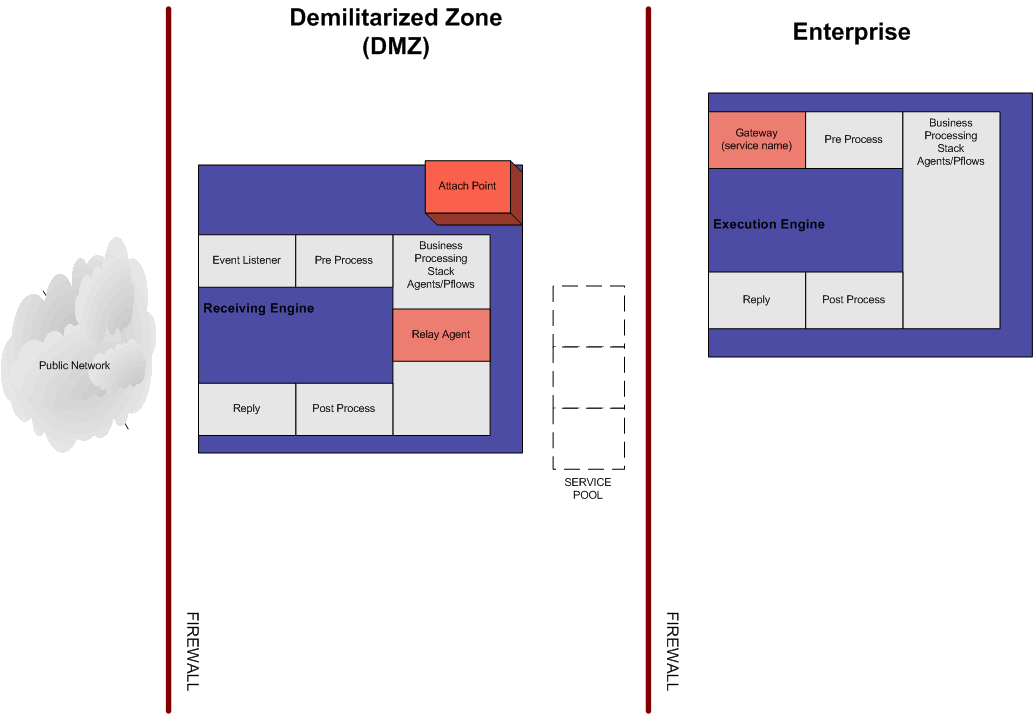
- The connection is
initiated by the Gateway listener configured on the execution engine
located in the enterprise, behind the firewall. A service name is
defined in the gateway listener configuration, as shown in the following
image.
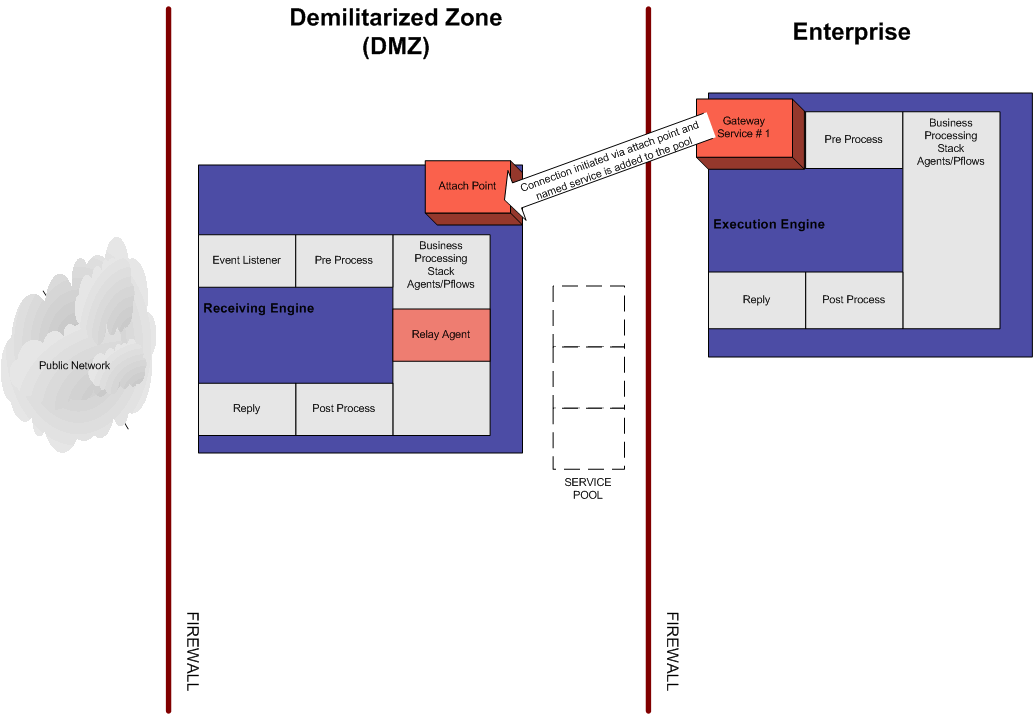
- After the connection
is established, it is added to a pool of connections and can be
referenced by the service name, as shown in the following image.
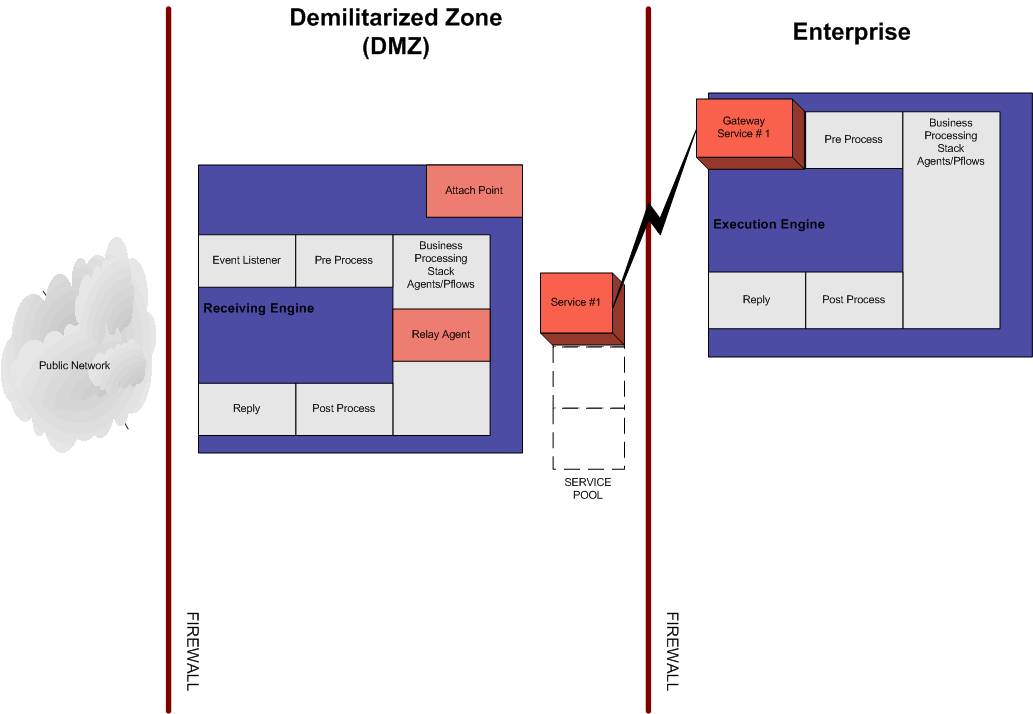
- When a partner connects
to the event listener defined on the iWay Proxy, the message is
routed to the execution engine through the relay service that is
added to the event listener. The relay service is configured with
the service name defined in the gateway listener configuration,
as shown in the following image.
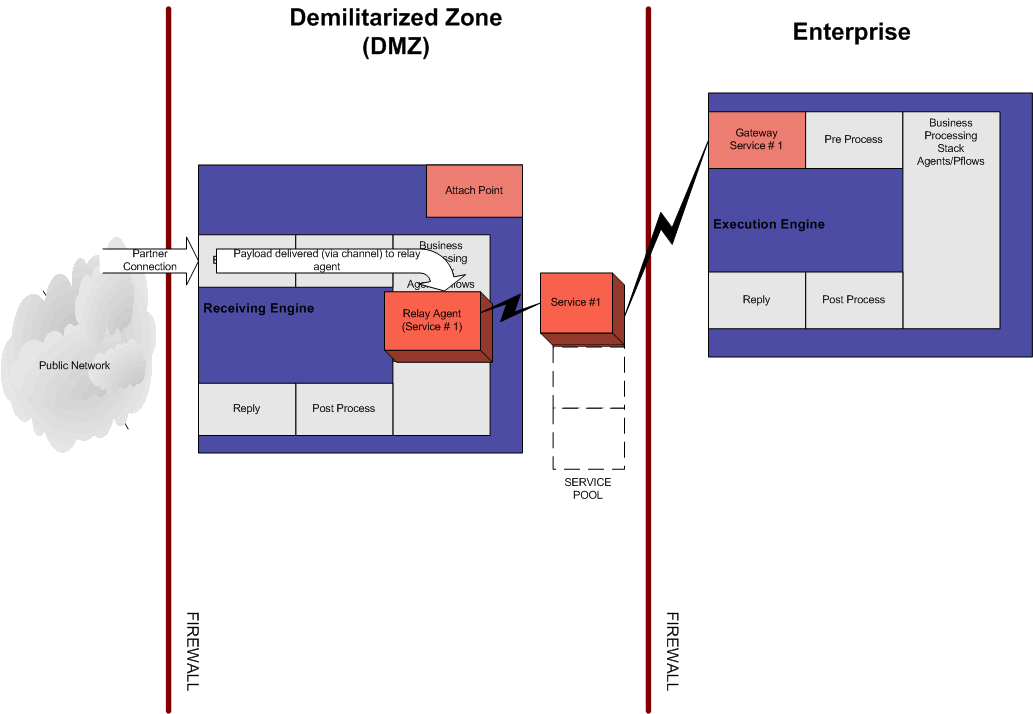
- After the connection
between the iWay Proxy and the execution engine is established,
messages pass securely through the configuration, as shown in the following
image.
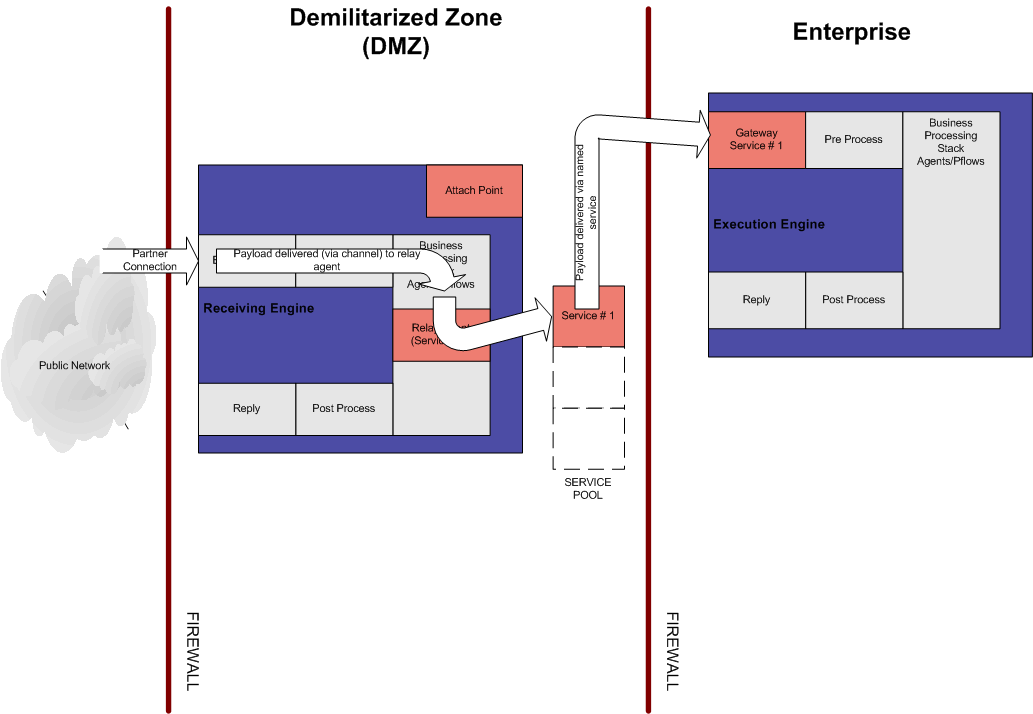
- Multiple channels
can be configured in the same way. Gateway listeners configured on
the execution engine can spawn services that the iWay Proxy can
use to pass data to the configured gateway listeners, as shown in
the following image.

x
As an example of a Reverse Invocation scenario in which
the payload is an EDI document, an AS2 message is routed over the
public Internet. The message must be processed securely within the
enterprise, where security certificates reside. The iWay Proxy server
receives the message securely within the DMZ and passes it back
for secure processing to an iWay Service Manager located inside
the enterprise that acts as the Execution engine.
The following diagrams depict the process:
- The Execution engine
initiates a connection with the Receiving Engine (iWay Proxy).
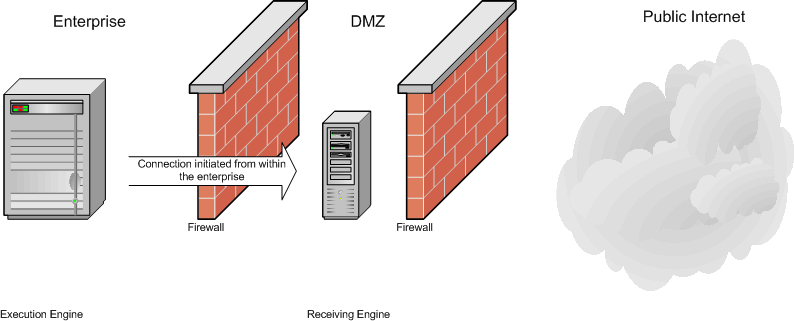
- The session is established.
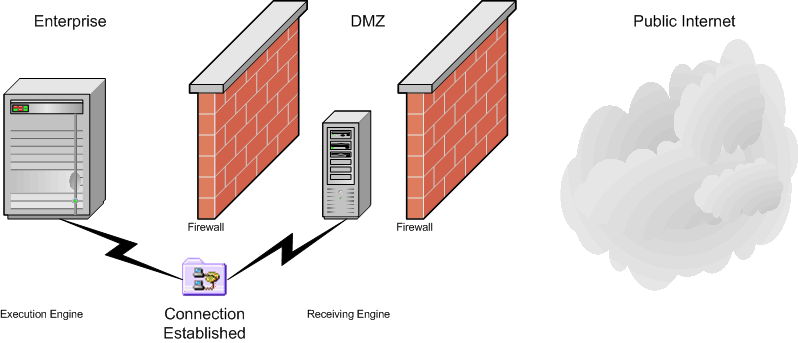
- The trading partner
initiates a connection with the iWay Proxy (the receiving engine).

- The connection is
established, and the iWay Proxy manages connectivity between the
trading partner and the internal processes hosted by the Execution
engine.

From the perspective of a trading partner, a secure connection
is established, and information can safely pass through the firewall
for secure processing.







